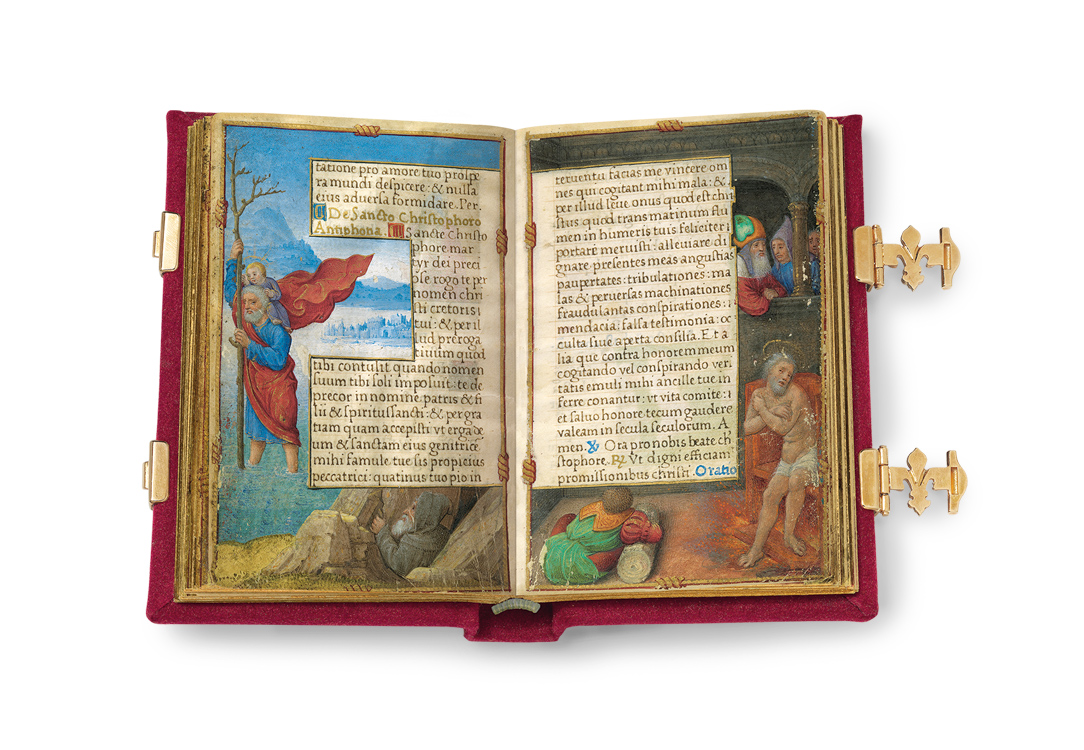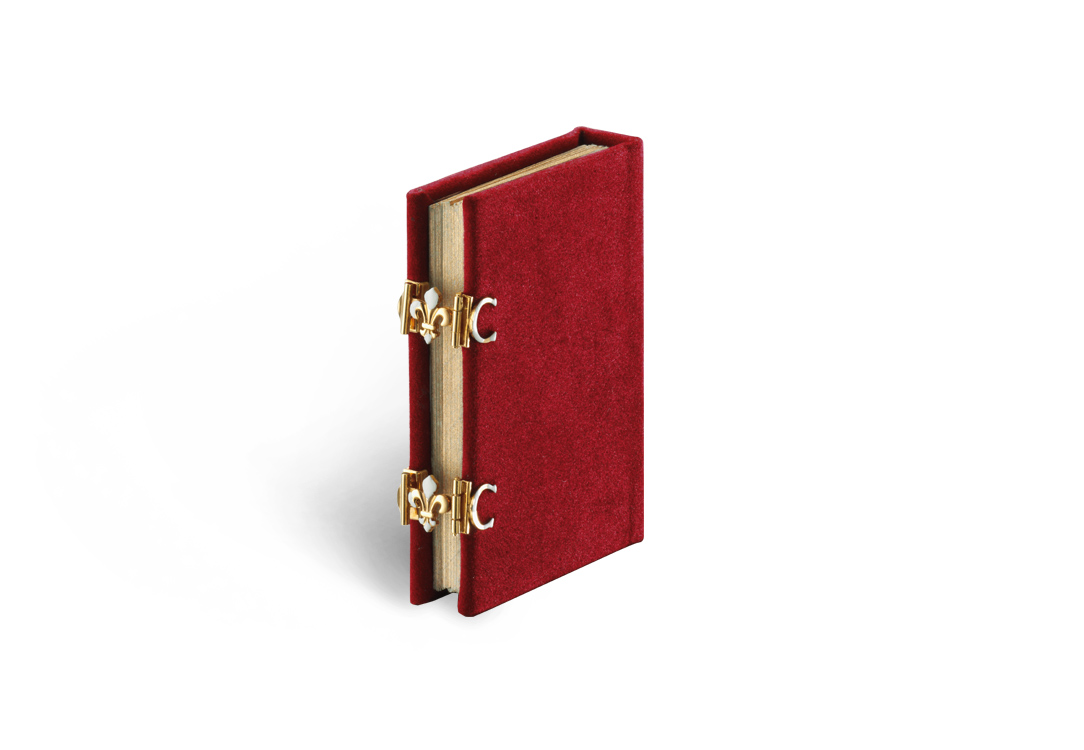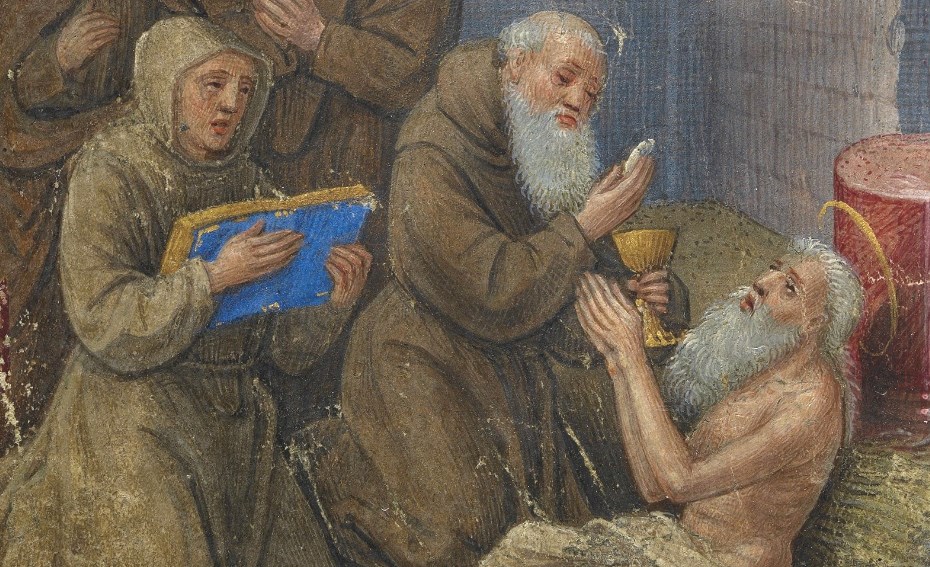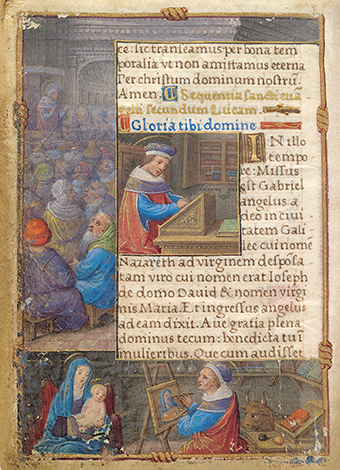The Prayer Book of Claude de France
The Personal Gem of a Young Queen
“The style of the Master of Claude de France can be characterized as the pinnacle of subtlety. He applies a delicate palette of soft purple, mauve and pink hues in tiny, seemingly invisible brushstrokes. The artist is especially skilful in using pale hues to create atmospheric depth in the landscapes and cityscapes of the background.” (Roger S. Wieck, Curator of Manuscripts in The Morgan Library & Museum, New York)
Gebetbuch der Claude de France
The Prayer Book of Claude de France: The Manuscript
A Picture Gallery by a Master Hand
The small Prayer Book of Claude de France stands out for its delicate painting and, above all, for its unusual wealth of images. On 104 pages it contains 132 miniatures depicting scenes from the life of Christ and the Virgin Mary, and also of the Apostles and various saints. The Master of Claude de France employed an ingenious page design to compose a continuous series of full-page and sometimes even double-page miniatures with a small text panel superimposed on the pictures. And even within these text panels he sometimes integrated small pictures with half-length figures. In a number of cases, the picture space is extended into rectangular indentations in the text panels.
Inspired by Leonardo da Vinci
Claude de France and her royal consort were significant patrons of the arts. In Italy, their agents bought works by Michelangelo, Titian and Raphael, which laid the foundation for the collection of paintings in the Louvre. The royal Chȃteau at Amboise on the Loire River was expanded and turned into a much admired Renaissance palace. Leonardo da Vinci entered the service of King Francis and spent his last two years in the nearby manor house of Clos-Lucé. Leonardo’s painting “Virgin of the Rocks” seems to have made a strong impression on the Master of Claude France. A miniature (fol. 15v) in the Prayer Book of Claude de France is obviously inspired by that painting.
A Very Personal Gift
Three years after Claude de France was married to the Count of Angoulȇme who later became King Francis I, she was crowned Queen of France in 1517. As a gift to herself on this festive occasion, she engaged her favourite artist to produce a prayer book which would be so small that she could always carry it with her. In this tiny manuscript, her coat of arms appears on three different folios, twice surmounted by the royal crown. The Prayer Book of Claude de France had a personal meaning for the gentle queen, as is apparent in the scenes referring to the joy of motherhood and family life or in the knotted Franciscan Cord framing the miniatures.
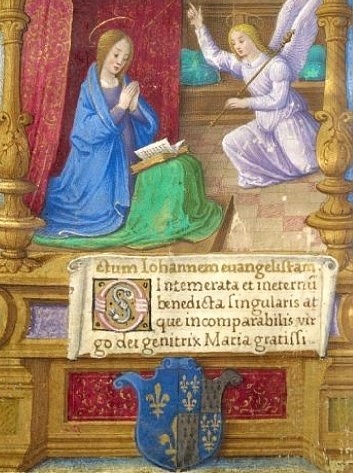
Gebetbuch der Claude de France
Under the Magnifying Glass: Brushwork Applied with Artistry
Gebetbuch der Claude de France
The Prayer Book of Claude de France: The Edition
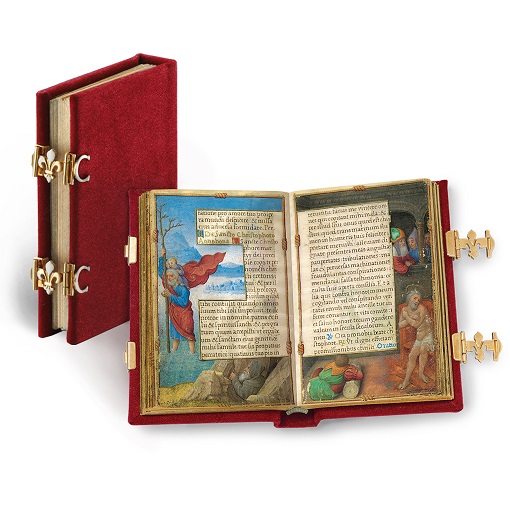
The Manuscript and the Facsimile at a Glance
It is indeed not only the small size of the Prayer Book of Claude de France but also the artistic quality of the miniatures, anticipating the style of impressionist paintings, which attracts the attention of the viewer. Meticulously reproducing every fine brush stroke of these wonderful paintings, the facsimile edition fascinates the viewer as much as the original, which continues to be inaccessible to the public.
Manuscript: New York, Morgan Library & Museum, MS M.1166
Date of Origin: about 1517
Place of Origin: Tours
Dimensions: c. 6.9 x 4.9 cm
Extent: 104 pages (52 leaves)
Artist: Master of Claude de France
Patroness: Claude de France, Queen of France
Illumination: full-page and double-page miniatures with 132 scenes, numerous areas in shimmering shell gold, very fine colour shading, gilt edges, bookplate designed by Pablo Picasso
Binding: red velvet with golden clasps
Commentary Volume of the Edition by Roger S. Wieck / Cynthia J. Brown
Print run: 980 copies
Gebetbuch der Claude de France
Enjoy Viewing 10 Sample Pages:
A Glance at the Facsimile
The sequence here selected from the Prayer Book of Claude de France begins with fol. 26v and a representation of the Holy Spirit as a Dove, surrounded by several circles of coloured light. Up to fol. 31r it is followed by full-page miniatures placed beside and below the text panel, depicting various saints in a lively scene. They are: Veronica, Amadour, John the Baptist, John the Evangelist, Peter and Paul, James and Andrew. On fol. 28r the Archangel Michael is fighting the dragon.
Gebetbuch der Claude de France
A Challenging Production: fac simile
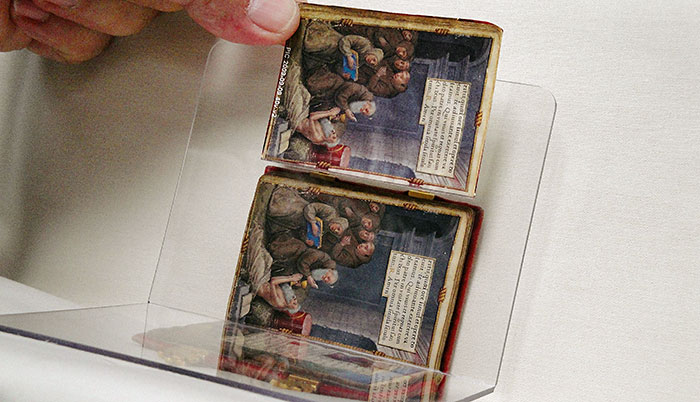
Special Precautions
Since the thin parchment pages of the Prayer Book of Claude de France are very fragile, the manuscript will continue to be stored in the air-conditioned safes of the Pierpont Morgan Library for years to come, inaccessible to the public. It is therefore particularly important to maintain the highest standards in producing the facsimile. The first step is to take a digital photograph of each page at the library where the delicate illuminated manuscript is kept. The pages are protected by an acrylic plastic sheet when the photographs are taken, and also when the prints are later compared with the original. Though requiring an additional amount of work, this is an indispensable precaution for protecting the manuscript.
With a Steady Hand
After the print runs have been carefully monitored and approved, the work of the bookbinder is still mostly carried out by hand, as tried and tested for hundreds of years. The print sheets are trimmed to the size of the original, and the book-block is formed by sewing the individual sections. Subsequently, edge gilding is applied to the three edges of the book-block, and the embroidered two-coloured headband is attached.
The exquisite red velvet covering the book is fastened by two golden clasps bearing the heraldic fleurs-de-lis of the French monarchy. Traces of white enamel visible on the clasps are applied with a steady hand by a goldsmith.
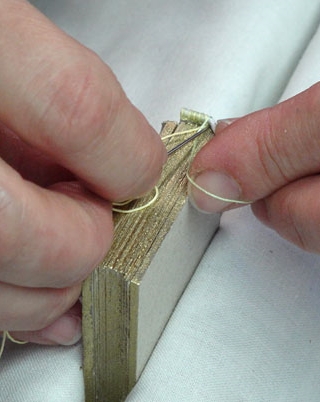
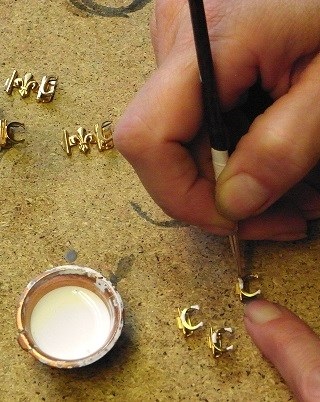
Gebetbuch der Claude de France
The Facsimile Folder for the Edition
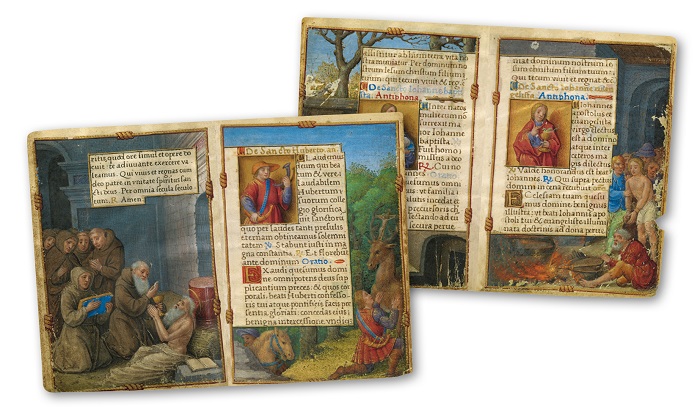
Gebetbuch der Claude de France




